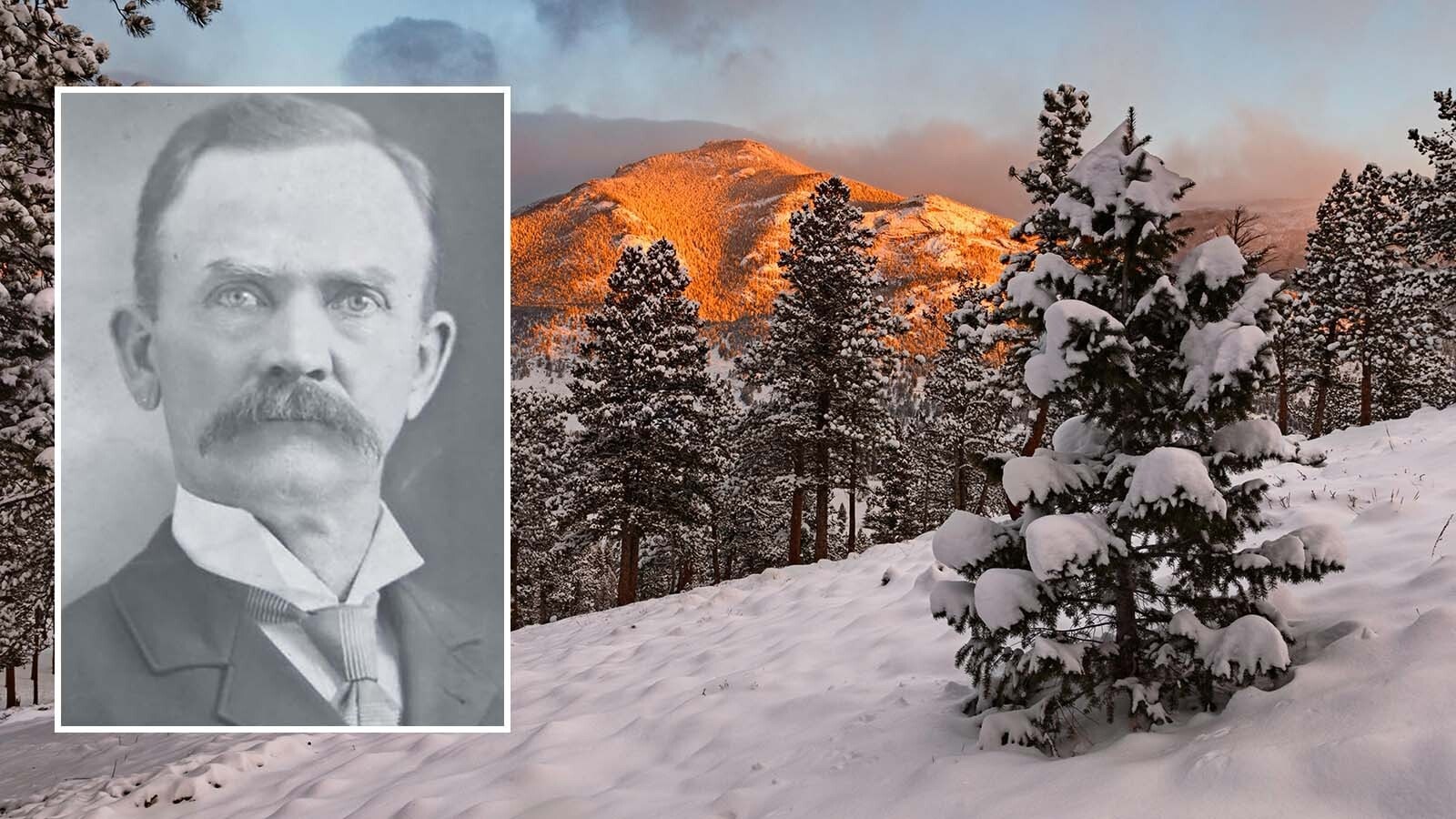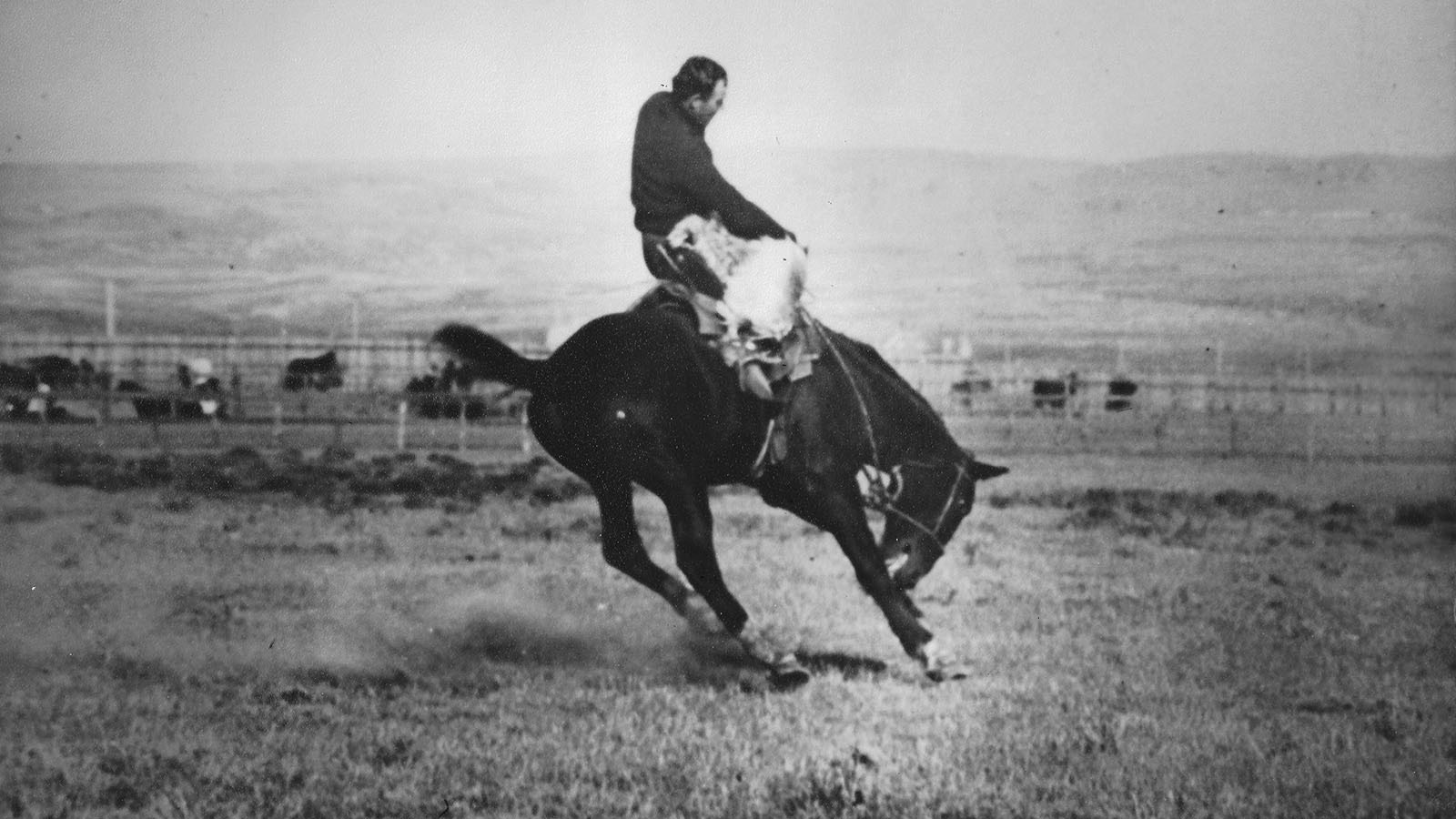CASPER — A .32-caliber Colt single-action Army pistol on display at the Fort Caspar Museum is loaded with history that can be traced back to a Wild Bunch member and a debt that he couldn’t pay.
The museum recently opened an exhibit of various weapons that have come to the museum over the years, and one of them is the pistol that belonged to outlaw Tom O’Day.
O’Day was a member of the Wild Bunch, the “Hole-in-the-Wall Gang,” who included other more famous members such as Butch Cassidy, Harry Longabaugh the Sundance Kid, and Harvey Logan known as Kid Curry.
“It’s a pretty neat item,” said Rick Young, museum director. “Everybody has heard of the Wild Bunch.”
Young said the pistol was initially donated by the daughter of Natrona County attorney Fred D. Hammond to the Natrona County Pioneer Museum. When it closed it was among items that came to the Fort Caspar Museum.
Hammond was a successful and respected attorney who practiced in the county during the early 1900s. A handwritten note states the pistol, a saddle, and horse were given to her father as the payment for his services defending O’Day in a series of three trials.
O’Day was charged with stealing horses from central Wyoming in November 1903 and tried in February 1904.

The Note
“The handwritten note says O’Day was captured by Sheriff Frank Webb in the Big Horns 110 miles from Casper,” Young said. “The note is signed by Mary Alice Hammond Burns.”
Burns died in March 1996 in New York. She had married a Cheyenne-area man, Robert Burns, who became an international attorney, and they lived in Valley Stream, New York.
Newspaper accounts of the hunt for O’Day from 1903 corroborate her note. O’Day was pursued by Webb, arrested, and had a series of three trials, two that resulted in hung juries and a third that brought a conviction.
“Tom O’Day succeeds Tom Horn as desperado most prominent in the eyes of Wyomingites,” a Cheyenne Daily Leader headline read on Nov. 24, 1903. “Suspected horse thief captured 200 miles from Casper and being brought to that place. Friends are gathering and a rescue may be attempted.”
The article stated that Natrona County Sheriff Webb and two deputies captured O’Day in the Big Horns and were returning to the city with 22 stolen horses. A report that O’Day’s colleagues would try and rescue him spurred a posse out of Casper to reinforce the sheriff but they never connected.
The Natrona County Tribune’s account published on Nov. 26 stated that O’Day was captured as he walked out of cabin early in the morning and Webb yelled for O’Day to throw up his hands.
“O’Day threw up his hands and shouted, ‘Good God, Webb, don’t shoot me,’” the newspaper reported. “The sheriff then ordered O’Day to come to him, which he did, and his six-shooter was taken off from him and he was asked where his horses were.”
The horses were brought back with the lawmen and O’Day as far as Lost Cabin, but the newspaper said O’Day’s friends later stole them out of the corral and more lawmen were headed back to the area to reclaim the horses. One of the horses belonged to prominent Casper retailer and druggist W. S. Kimball.
The horses were tracked and recovered.
The Trials
In February, O’Day was brought to trial on five counts of horse theft with Hammond as his defense attorney. Hammond tried to get the trial set on a July docket but was overruled by the judge. During the first trial he challenged testimony of witnesses, including a man who testified that he rode with O’Day about six miles northwest of Casper Creek Ranch Road when O’Day was driving a “bunch” of horses including three with the C Y ranch brand.
After all the testimony, jurors could not reach a verdict with six calling for conviction and six for acquittal.
A second trial also resulted in a hung jury. Hammond asked for a new judge. A third trial Feb. 23 went forward despite a motion by Hammond for continuance with a new judge from Rawlins. Hammond told the judge he was waiting for the appearance of two defense witnesses. The judge ordered the trial to proceed.
“A speedy trial would be of as much benefit to the defendant as to the state,” the Natrona County Tribune wrote the judge ruled in its Feb. 25 edition. “If he is guilty, he should be convicted and sentenced, if he is innocent he should be acquitted and given his freedom.”
The case was tried and O’Day found guilty after three ballots in 45 minutes of deliberation, the newspaper reported. The judge sentenced O’Day to six years in prison but not before he told him to reform.
“In the early days of Wyoming it used to be the custom to rustle stock, and if a list could be compiled of all the men who had gotten a start in life by this method, it would make quite a large catalogue,” the Natrona County Tribune quoted the judge in its March 3, 1904, edition. “And O’Day you ought to have quit when the rest of the boys did.”
O’Day got mad, the newspaper reported.
The Threat
On the way back to the jail he threatened the sheriff.
“If I had a gun, you fellas would never put me in jail again,” O’Day reportedly said.
The sheriff responded that he made sure he did not have a gun.
“Therefore, we will have no trouble getting you back to jail,” the sheriff told him, as quoted in the Tribune on March 3, 1904. The newspaper wrote that a few days later the prisoner was secretly sent in a train baggage car to prison under heavy security.
Meanwhile, Hammond and family lived in Lander for a time and became its mayor. The family relocated to Casper and by 1913 he was divorced from his wife. He married a woman that year who was 21 years younger.
First wife Wilhelmina Brunner Hammond later moved to Washington, D.C. Their only surviving child of five born during their marriage was Mary Alice, their youngest.
Fred Hammond died in 1924 after spending a few years in Denver practicing law.
An article in the Sept. 2, 1962, Casper Star-Tribune profiled the pistol, along with holster that had been donated by Mary Alice to the Pioneer Museum.
“Mrs. Burns’ mother gave her this gun in 1930, and she has had it oiled and cleaned and kept in perfect condition,” the newspaper reported. “Mary Alice Hammond Burns has donated this gun, given to her father by Tom O’Day to Natrona County Pioneer Museum.”
The current display of the pistol at the Fort Caspar Museum includes a short biography of O’Day that states that following his prison term he got married, moved to Deadwood, South Dakota, and became a “minor celebrity.”
He died Nov. 27, 1930, and is buried in Dunlap, Iowa.
Dale Killingbeck can be reached at dale@cowboystatedaily.com.










